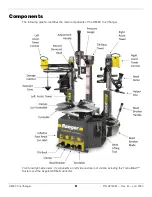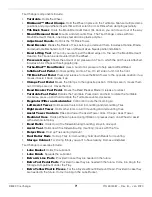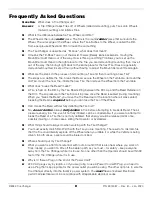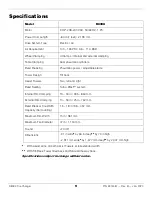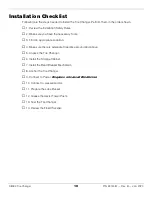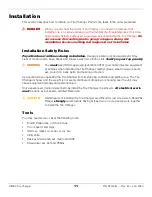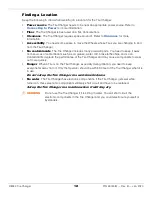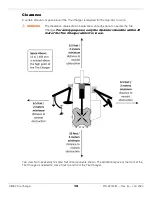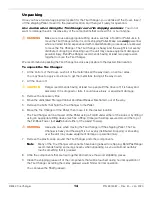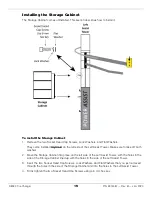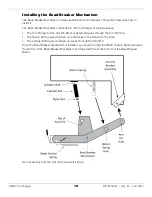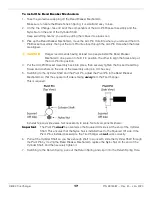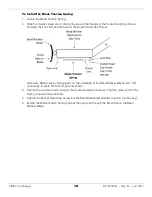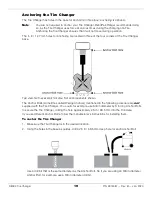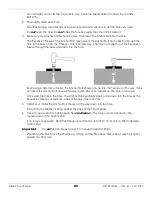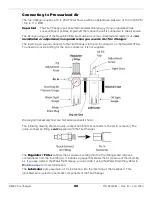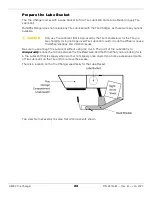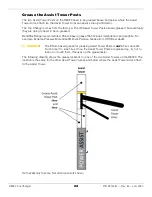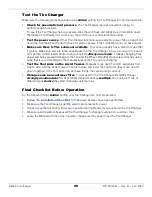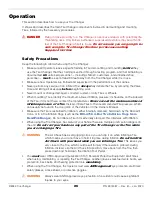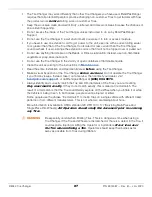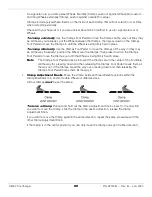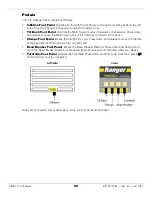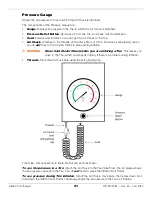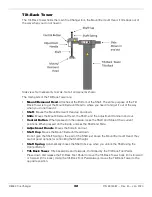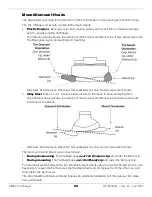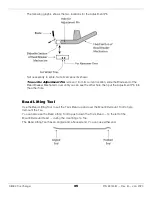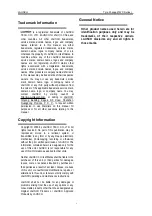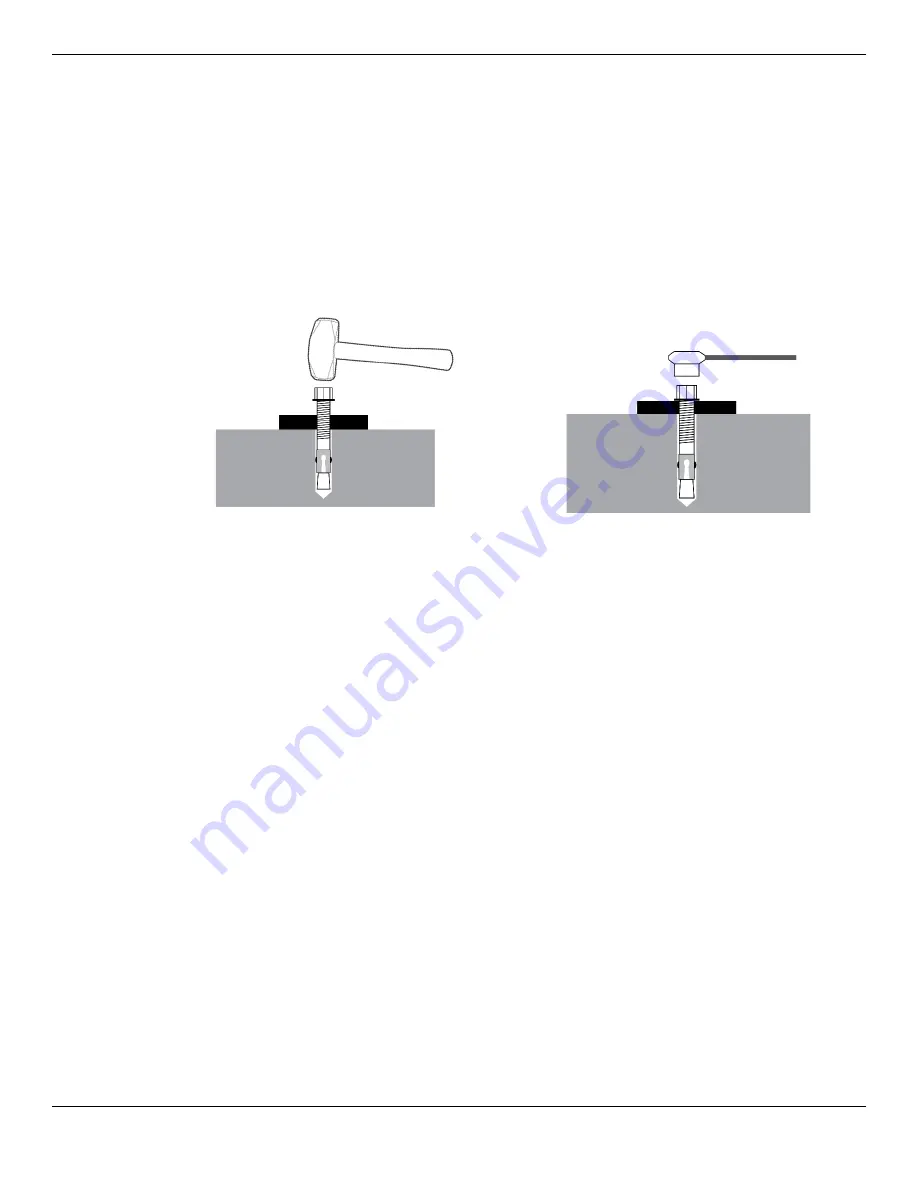
R80EX Tire Changer
20
P/N 5900087 — Rev. B — Jan. 2020
Go in straight; do not let the drill wobble. Use a carbide-tipped drill bit (conforming to ANSI
B212.15).
3.
Thoroughly clean each hole.
BendPak Ranger recommends using a wire brush and a vacuum to get the hole very clean.
Do
not
ream the hole. Do
not
make the hole any wider than the drill bit made it.
4.
Make sure the Washer and Nut are in place, then insert the Anchor Bolt into the hole.
The Expansion Sleeve of the Anchor Bolt may prevent the Anchor Bolt from passing through the
hole in the base of the Tire Changer; this is normal. Use a hammer or mallet to get the Expansion
Sleeve through the base and down into the hole.
Even using a hammer or mallet, the Anchor Bolt should only go into the hole part of the way; this is
normal. If the Anchor Bolt goes all the way in with little or no resistance, the hole is too wide.
Once past the hole in the base, the Anchor Bolt eventually stops going down into the hole as the
Expansion Sleeve contacts the sides of the hole; this is normal.
5.
Hammer or mallet the Anchor Bolt the rest of the way down into the hole.
Stop when the Washer is snug against the base of the Tire Changer.
6.
Use a torque wrench to tighten each Nut
clockwise
to the torque recommended by the
manufacturer of the Anchor Bolt.
If no torque is specified, BendPak Ranger recommends ~55 lbf-ft / 74 N-m for a 3/8 in diameter
Anchor Bolt.
Important
:
Do
not
use an
impact
wrench to torque the Anchor Bolts.
Wrenching the Nut forces the Wedge up, forcing out the Expansion Sleeve and pressing it tightly
against the Concrete.

